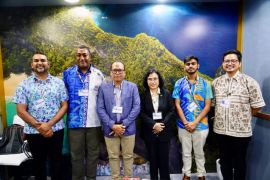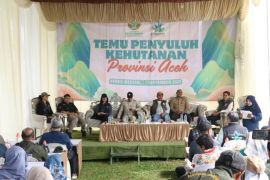During a public opinion hearing meeting on conservation here on Wednesday, Biodiversity Director at the ministry Indra Exploitasia said that there are three types of protected areas in Indonesia: conservation forests, protected forests, and high conservation forest areas.
The ministry uses three reference points for protected area terminology, which include Law No. 5 of 1990, which describes a conservation area as a nature reserve and nature conservation area.
Next is Law No. 41 of 1999, which divides the functions of forests into conservation forests and protected forests.
Finally, Law No. 26 of 2007 divides protected areas into Nature Reserve Areas (KSA) and Nature Conservation Areas (KPA), including protected forests and cultivation areas.
Protected areas need to be translated in a simple manner because, based on the terminology, they have to meet three criteria: They need to be legally established to have conservation value, have managers, and have certain unique characteristics in terms of biodiversity preservation at three levels—ecosystem, species, and genetics.
"The terminology related to protected areas may need to be aligned with the three terminologies that we have, conservation forests, protected forests, and high conservation areas," he noted.
The ministry is working to make biodiversity mainstream in the policy sector. Hence, it is seeking to ensure that whenever there is road construction, consideration is given to animal pathways, and when a plantation is developed, space is provided for animal habitats.
Further, development must not only be oriented toward the economy, but also prioritize the biodiversity aspect in Indonesia, Exploitasia stressed.
Related news: Ministry finalizes draft roadmap for strategic downstream investments
Related news: Farmers pleased red palm cooking oil increased product value: minister
Translator: Sugiharto P, Fadhli Ruhman
Editor: Rahmad Nasution
Copyright © ANTARA 2022











